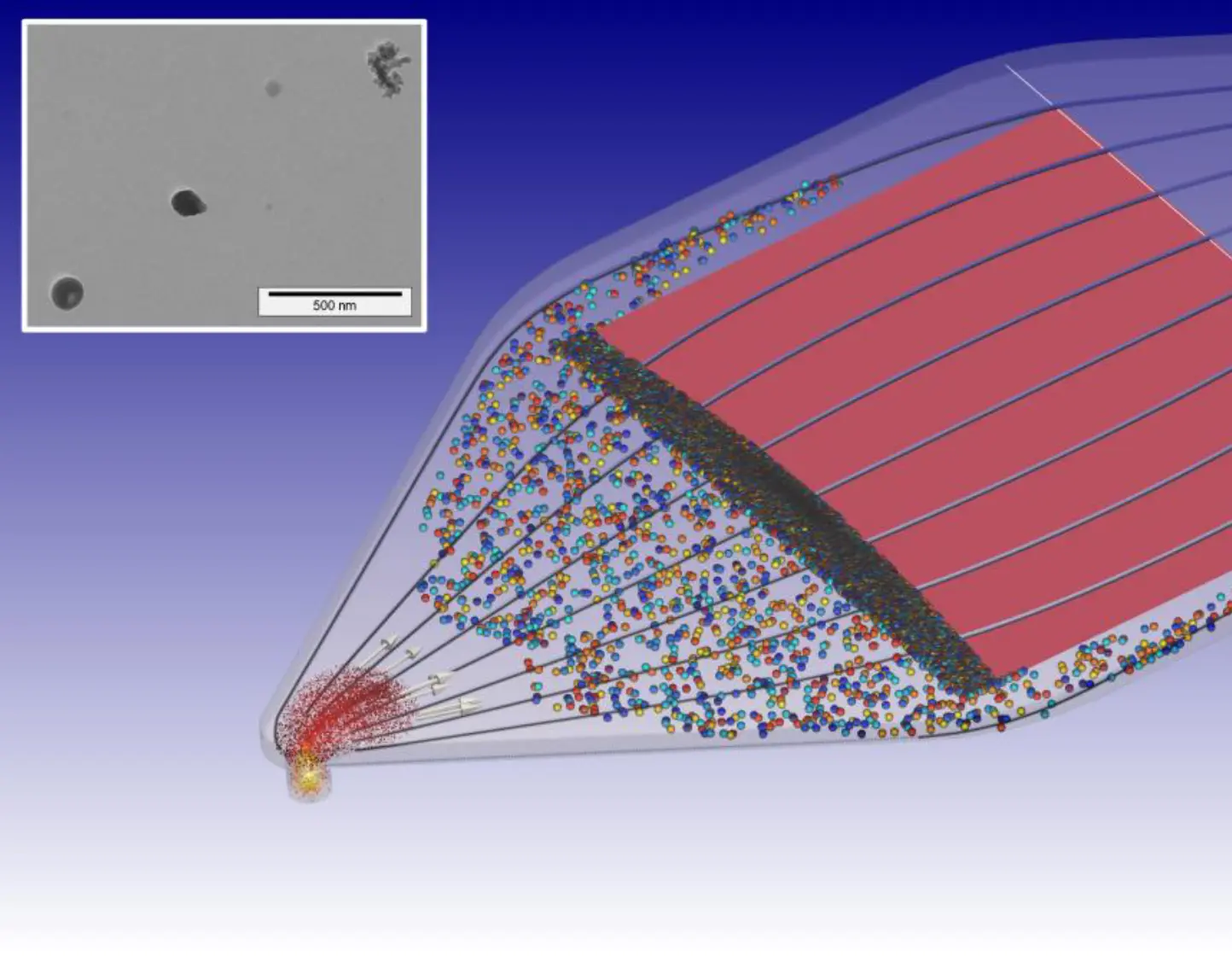Thermophoretic Force on Suspended Particles

The micrograph in the inset shows a typical
size of the collected particles.
This project aims to study the potential of the thermophoretic force to collect particles from the atmosphere. For that, we performed a computational study of the airflow through a collection chamber, including aerosol particles of diverse sizes and densities and a vertical thermal gradient that will control the particle deposition in the collection region. A fluid dynamics model is built to describe the airflow, and the size-dependent drag force of the air on the particle is also considered in full detail. The effect of the particle characteristics (size, thermal conductivity, density), air flux and turbulences on the deposition process is analyzed before performing the first tests in the physical device.
Ambient air can have a sort of suspended or aerosol particles of different origins and sizes. They can be natural particles like pollen, dust or bacteria and viruses, but they can also have human origins like smog or soot. The sizes can range from a fraction of a millimeter down to a nanometer or below. Particulate matter is transported by the carrier gas until its deposition by buoyancy effects if its size is large enough. Particles smaller than a micrometer, however, can remain an indefinite time suspended in the air. This increases the adverse effects that they can have on our health. Fine and ultrafine particulate matter can, for instance, enter deep into the lungs and the cardiovascular system. One obvious way to control and limit their malignant effects is by collection for monitoring or other purposes. In this project, we studied the potential of the thermophoretic force to collect particles from the atmosphere. We considered first the airflow through the collection chamber. The real geometry was used for the study and special attention was given to the minimization of the adverse effect of turbulences once a steady state flow is reached. Next, the transport of the particles in the air was considered. The particle size dependence of the fluid drag force was carefully taken into account. Finally, the thermophoretic force was introduced by adding an extra force on the particle dependent on a thermal gradient within the fluid. The new force has been shown to strongly enhance the deposition of the suspended particles. The deposition range, however, depends on the thermal properties of the particles and the particle size is seen to affect it the strongest. Therefore, a non-uniform distribution of the particles within the chamber is predicted, with particles of larger size having a larger deposition range. The conclusions of the study will be validated by tests done using the physical device.